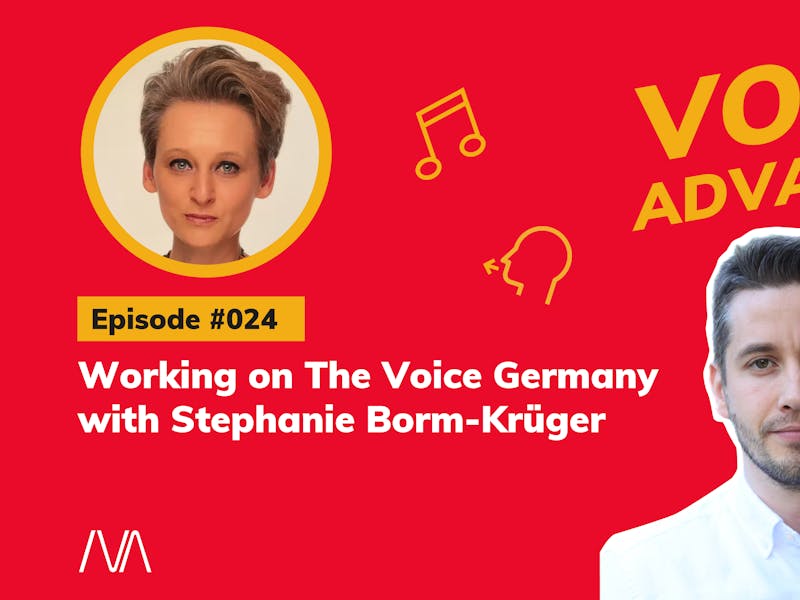We are delighted to announce that after 5 years, IVACON is back in person! Our exclusive week-long conference is tailored for singing teachers just like you.…
Think of your voice like a three-legged stool: If one of those three legs is shorter than the others—or, worse yet, is missing!—you will have a difficult time sitting on that stool . . . that is, if it even stands at all!
Singing is made up of three systems: respiration (breath), phonation (your vocal folds coming together), and resonation (how your vocal tract is shaped).
If any one of those three systems is out of whack, you’ll feel that familiar frustration or even discomfort in your voice.
Here at The Balanced Singer, we are all about—you guessed it!—balance. We believe that by bringing these three systems of singing into balance, you will have access to your full range of notes, with control, ease, power, dynamics, and flexibility.
After all, these three systems are the only things we as singers are in direct control of.
We can choose how much air to inhale and then how quickly or forcefully to expel it (respiration).
We can choose (with GREAT amounts of practice!) how thick or thin our vocal folds are when we go to speak or sing, therefore affecting how heavy or light of a tone we create, as well as on what pitch (phonation).
And we can shape our vocal tract in a variety of ways to achieve brighter or darker sounds, namely by shaping and modifying our vowels and adjusting our larynx position (resonation).
Vocal balance means that in our neutral, relaxed state, no part of the voice feels more squeezed OR more breathy than any other area. We have access to our lowest and highest notes, and they sound and feel connected, meaning there aren’t any flips or breaks between our chest and head voice.
There are certainly transitions that occur that we may be able to feel and hear, but for the most part, we enjoy a smooth singing experience from the bottom to the top of our range.
When these systems are in balance, your voice is free to make the widest possible variety of sounds!
But how do you get there?
There are four key steps to finding what “vocal balance” means for you:
- Finding basic intonation. This means coordinating your brain and your voice to match pitch and follow melodies.
- Finding what is known as chest voice and head voice.
- Finding what we call a “connection.” You want to learn how to blend head and chest register and find what is often referred to as “mix.” The effect is singing with one continuous voice instead of disjointed registers that don’t meet in the middle.
- Eliminating unnecessary extrinsic muscular tension. The extrinsic muscles are the muscles around your larynx in your neck, jaw, and tongue. We don’t want them to get in the way of our larynx (voice box) from functioning how it’s supposed to.
Think of training your voice like a gymnast might train for the balance beam. When the gymnast is first starting out, she may only be able to very carefully, and with a lot of effort and thought, walk from one end of the beam to the other. No fancy turns, jumps, or leaning off one side or the other.
But imagine that as the gymnast increases her strength, muscle memory, and coordination, she is able to add in a turn, then a leap, and one day somersaults, backflips, and then finally that crazy helicopter leg thing that Simone Biles does at the Olympics!
How is this possible?
Well, this gymnast first found balance on that narrow beam. She knew where the exact middle was. She memorized the feeling of her whole body in perfect alignment over those few inches of beam and knew how to always come back to that placement.
Only then could she start to lean off one direction or the other. She probably fell plenty of times along the way, pushing herself too far from “balance,” but that just taught her to come back to “center” each time.
The same is true for us as vocalists! Once we find balance and are comfortable there, we can lean toward that powerful belt Sia song that we long to nail at karaoke night.
Or we can lean in the other direction and commit to a legato, legit classical piece for an upcoming music school audition.
Whatever your vocal goals are, we are thrilled to guide you to finding YOUR balanced voice. Because from there, anything is possible!
Related Articles
Singing Teachers Summit
A free, online summit for music educators
As a worldwide leader in vocal education, we're excited to host a Singing Teachers Summit on January 20th and 21st, 2024. This free, online event features a fantastic lineup of guest lecturers to offer insight on a wide range of…
Stepping Out of Your Comfort Zone with Stephanie Borm-Krüger How Performing Under Pressure Helps Unlock Your Creativity Do any of your students dream of performing on a TV show like The Voice or one of the Idols singing competitions? Then they’ll want to…








